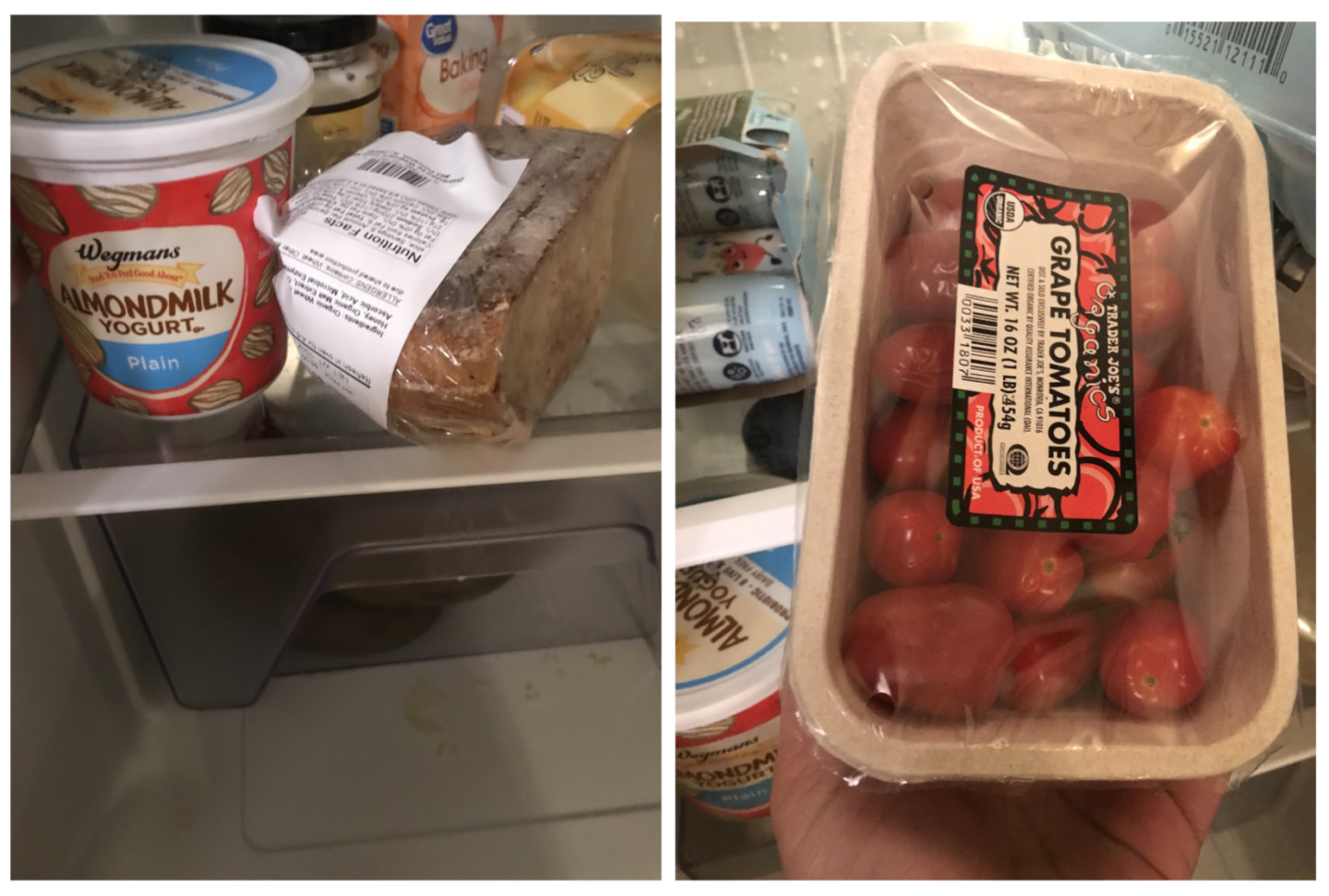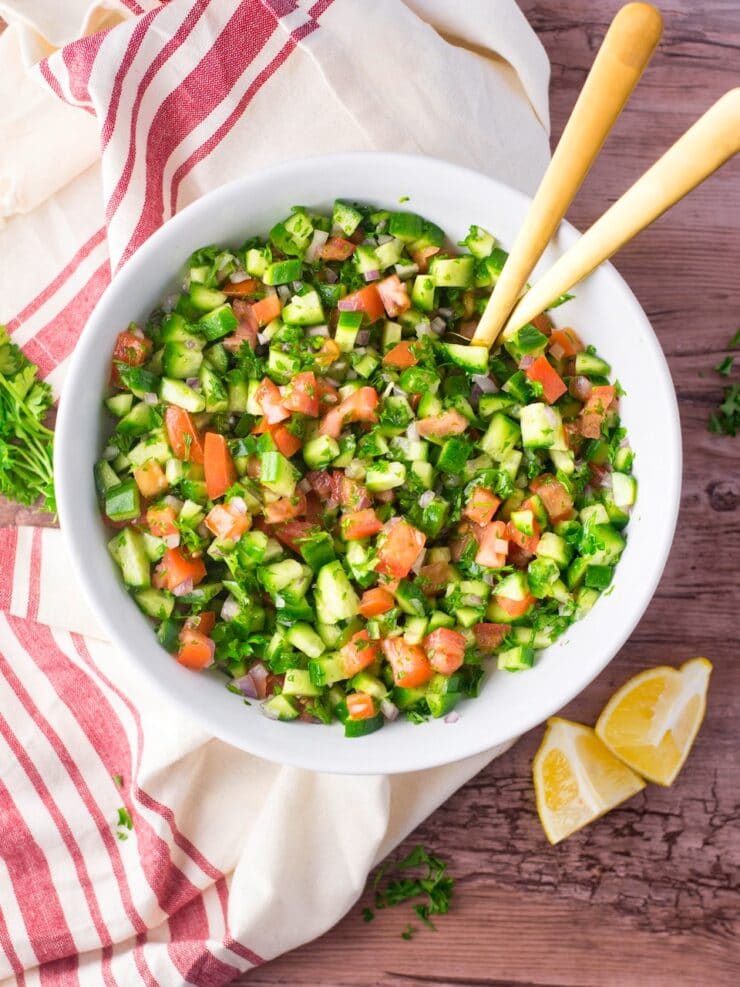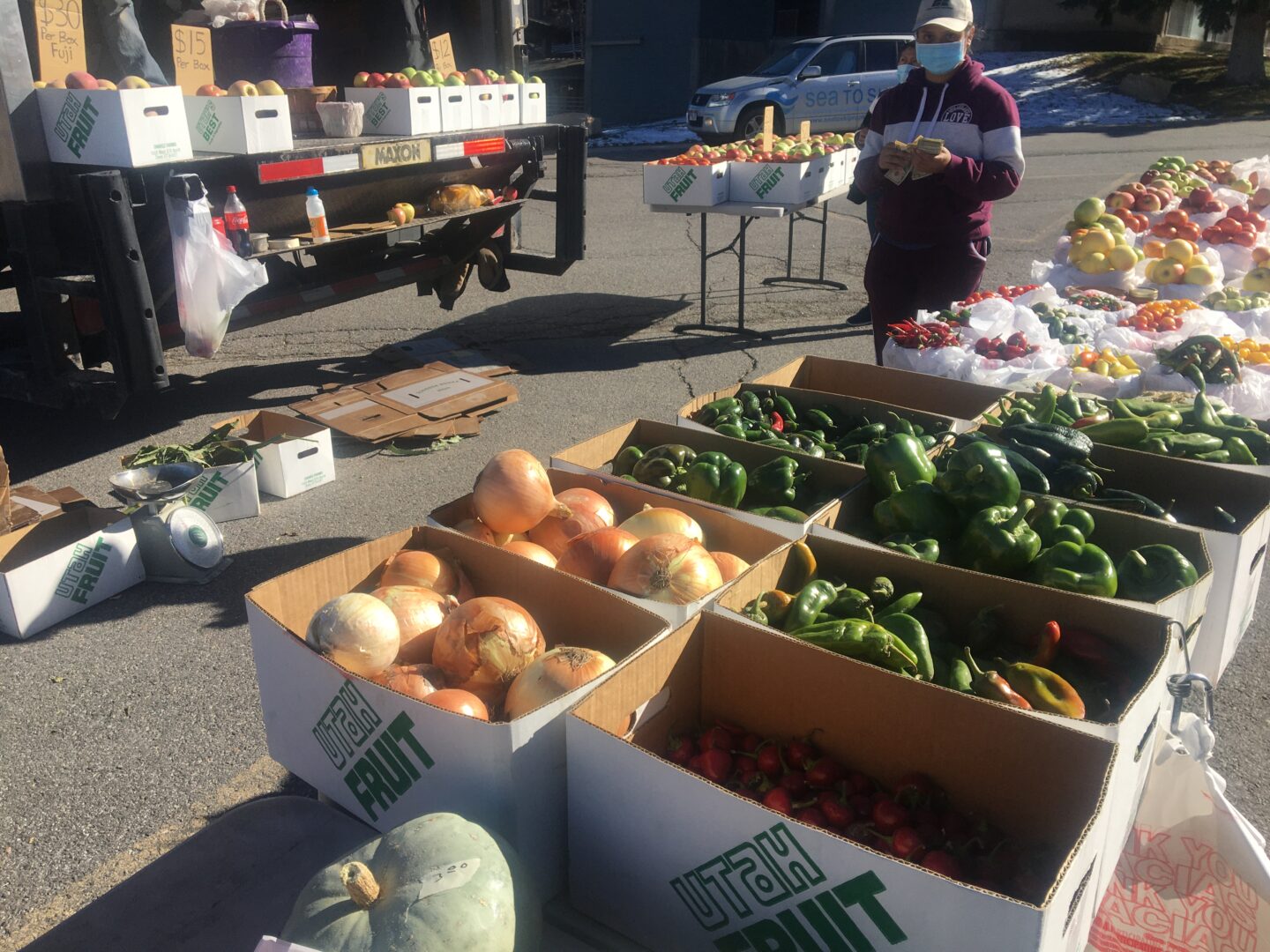Hello everyone, welcome back to the second installment of Level Up Your Leftovers, a series where I (Naomi) take your leftovers and turn them into a refreshed recipe! For this post, we have an anonymous submission: “I have tomatoes, bread, and yogurt, [and] I am looking for a savory snack/meal.” The post also graciously included some photos to show us what we’re working with:

This one was a bit of a challenge for me, as I don’t often work with almond milk yogurt, nor do I combine tomatoes and yogurt all that often. But after a bit of research, I think I’ve found a great and healthy meal that you can make with just a few extra ingredients! You can turn the tomatoes and yogurt into a creamy Israeli salad, and that bread looks perfect for a quick toasted garlic bread to eat on the side.
This recipe was adapted from Tori Avey and Food52.
Ingredients
Israeli Salad

- 1 package of grape tomatoes, diced
- 1 large cucumber, diced
- 1 bell pepper and/or 1 small onion, diced (optional)
Yogurt Dressing
- ½ cup yogurt (regular or non-dairy)
- ¼ cup lemon juice
- ¼ cup olive oil
- 2 cloves garlic, very finely minced or crushed
- ¼ cup fresh parsley, minced
- 1 tsp black pepper
- Salt, to taste
Garlic Bread

- 1 loaf of bread, sliced
- 3 cloves of garlic, finely minced
- ⅓ cup olive oil or melted butter
- Salt and pepper, to taste
- Fresh parsley or other herbs, to taste (optional)
- Red pepper flakes, to taste (optional)
Preparation
For the salad and dressing:
- Combine all diced vegetables in a bowl.
- Whisk together all of the dressing ingredients before pouring over the vegetables. Stir to coat. Serve at room temperature or chilled.
For the garlic bread:
- Preheat the oven to 400 degrees Fahrenheit.
- In a small bowl, combine the olive oil or melted butter with the garlic, herbs, and spices. Stir to incorporate.
- Lay out slices of bread on a baking sheet. Using a spoon or pastry brush, generously coat the tops of each slice with the garlic oil/butter mixture.
- Place in the oven until the edges of the bread turn a deep golden brown, for around 5 minutes.
- Take out of the oven and let cool for 5-10 minutes, then enjoy with the Israeli salad!
Fun Facts
This recipe is incredibly simple, and quite delicious! A few fun facts about our star ingredients:
- Cherry tomatoes can help prevent both strokes and cancer!
- Nut-based yogurt contains the same healthy bacteria as dairy-based yogurt, promoting gut health.
- Yogurt, nut-based or otherwise, is a great source of protein.
- A bit of an objective opinion, but eating bread definitely raises my happiness levels 🙂
Yogurt is a great protein option for those trying out vegetarianism – it is very nutrient-dense in relation to the amount of energy used to produce it and has a much lower impact compared to meat. Making a small swap like this is a great way to lower your carbon impact in the long term, and it’s healthy as well!
If you try this recipe, let us know over on Instagram or Facebook. If you want to try and stump me with your own batch of leftovers, send in a submission here! Your recipe could be the next one featured on the Tigers Go Green Blog.
Happy Cooking!
Naomi


